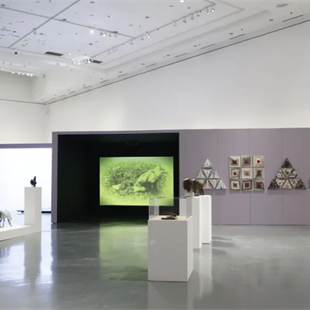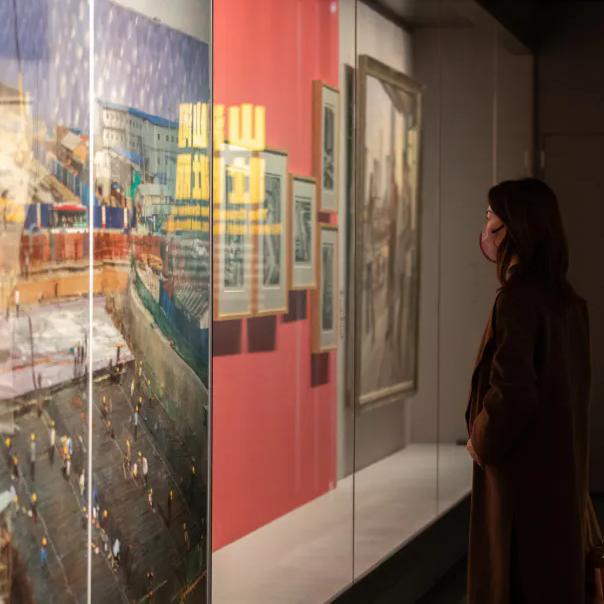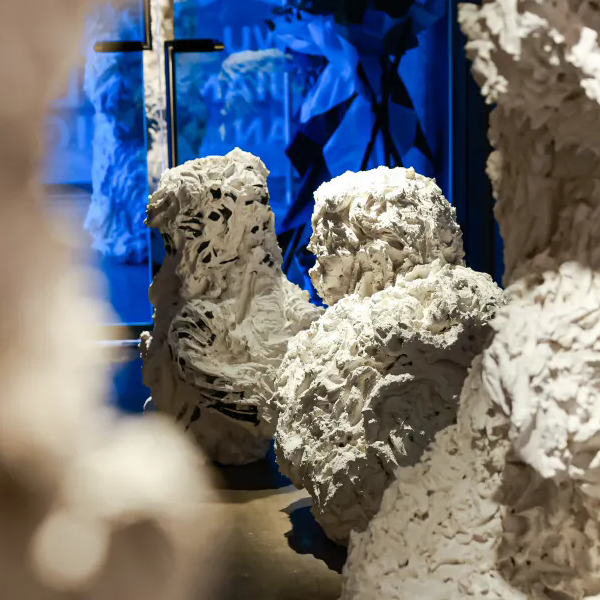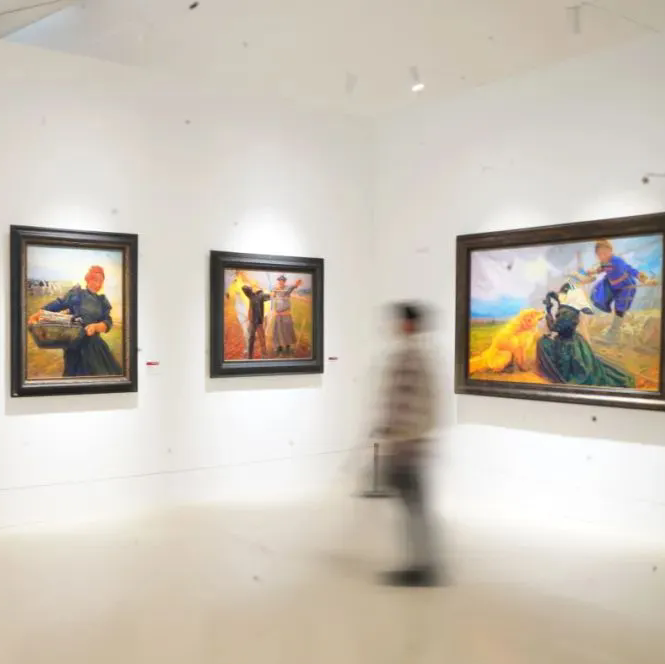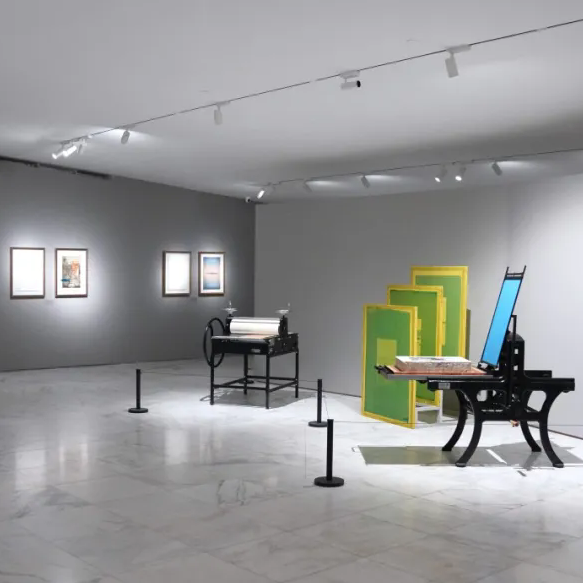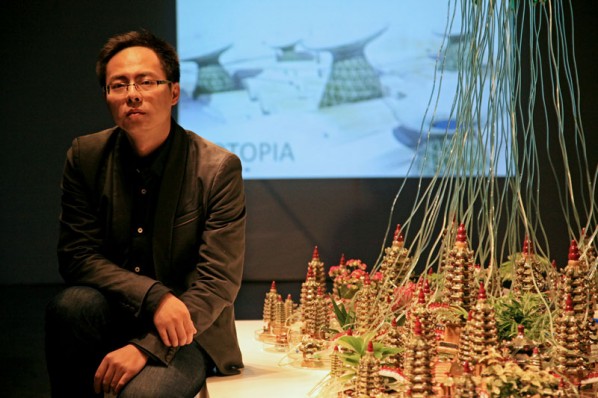
A typical cross-person as he is, Ye Cheng relate his works to multidisciplinary fields such as literary, art, architecture and photography. He has participated in the L'Institut de France annual Architecture Exhibition, Mercedes-Benz Smart International Design Exhibition, the International Art and Design Exhibition organized by Quai Branly Museum, Galery Laboratoire in Paris, Spanish Modern Cultural Centers and other institutions. He has been to ISEA International Forum in Istanbul, Nanjing University Institute of Architecture and the Chinese Embassy Education Office in Paris for academic lectures. He is dedicated to the promotion of his new urban utopia-- ecological theory of ECOTOPIA, which stands for "The Rural Counterattack City", the introduction of ecological agriculture within the city, reorganization of the existing relations of production and consumption relations. Originally, he purposed his concepts of the "urban farmers" and “Community’s collective ownership of urban agriculture” in the civil society. He also brings his ECOTOPIA to 2011 Shenzhen & Hong Kong Bi-city Biennale of Urbanism/ Architecture which is held from December 8th, 2011 through to February 18th, 2012.
Courtesy of Ye Chen, all rights reserved.
1. ECOTOPIA - Transplanting the Countryside in the City(Video)
•Eco-architecture, a curative architecture
The eco-architectures should be curative, a kind of living machine. As an important link of urban ecosystem, they will be inserted into cities, as if transplanting new artificial organs to a withering ill body. ECOTOPIA brings the bio-agriculture into the city as a treatment measure, in other words, to insert the eco-agricultural system into the urban ecosystem as a restoration therapy in order to accelerate the system’s recycling and regeneration with the help of eco-technologies so as to restore the unbalanced ecosystem.
•Urban Farmer, restructure of society frame
This restoration system consists of a series of sky-farms which are not isolated from each other but are making up an “eco-tribe” which perfects the urban biological chain and supplying predominant food. It results in new social type called “Urban Farmer”. The community residents can employ a certain number of “Urban Farmers”. A new rationing and consumption system will come into being based on the eco-community – “Community’s collective ownership of urban agriculture”, producing independently and self-sufficiently in the community. Indeed, the community residents must assume their responsibility for the agricultural products’ quality, attaching great importance to its supervision and management.
•Civil Society
ECOTOPIA aims to narrow the gap between the rich and the poor while eliminating the segregation between people, enhancing the exchange and understanding among the residents and endowing the citizens with more participation rights and thus promotes the democratization reform. It is a reform to the existing mode of urban communities as well as a new approach to revamp the community without large-scale building demolition and resident moving.
[gallery link="file" orderby="title"]
2. ECO-Mandala (Installation)
Main materials: bonsai ceramic accessories, glass Petri dishes, plastic boards, models of animals and human beings, live plants, infusion tube, liquid fertilizer, food coloring, etc.
Size: 2.5x2.5x2.6m (changeable according to the venue)
"ECO-Mandala” was inspired by Ye Cheng's "Ecotopia" urban design theory and Tibetan Mandala.
This work, a three-dimensional mixture of symbolic metaphor and the absurdity of classical poetry, presents a scene of the ancient Chinese city that has a forest of towers and crisscross bridges. A large number of scattered glass Petri dishes have been piled high and low rolling into a city base, and the main urban and natural elements have been abstracted into cell bodies that have been placed in glass Petri dishes in these sizes. These cell bodies contain ceramic traditional pavilions, urban sky farms, hanging lawns and swimming pools, sky safaris and artificial roof beaches. This fictional city is a complicated and huge organism formed by these cell bodies. It’s a flourishing city; nevertheless, it is only a fragile city. Those transparent containers with green liquid hung in the air look like transparent jellyfish that are hanging down a lot of infusion tubes to irrigate the plants with liquid fertilizer in the city. This is also a symbol of the city's ecological treatment, which cures the highly polluted and high density sick city by infusing green fresh blood through eco-technology.
Those transparent cloudlike devices floating above are given some functions which are systematic waste recycling treatment devices or a kind of air cleaning devices that can absorb the solar energy and even the lightning energy to supply the city, we can imagine that if human were forced to move into the sea in the future, these floating devices could filter polluted air, and transport fresh air to the undersea city. They could also be some of the huge tidal energy devices, the algae biomass reactor that could produce biological oil by photosynthesis or a floating marine farm.
Henry David Thoreau said: Thanks God men cannot fly, and lay waste the sky as well as the earth. He would ever have thought that 150 years later the human can not only fly, but also have the ability to destroy the sky! We must begin to replace the black technology by green technology to reduce air and water pollution as soon as possible so that the earth can recover.


